#Robe à la Française
Text

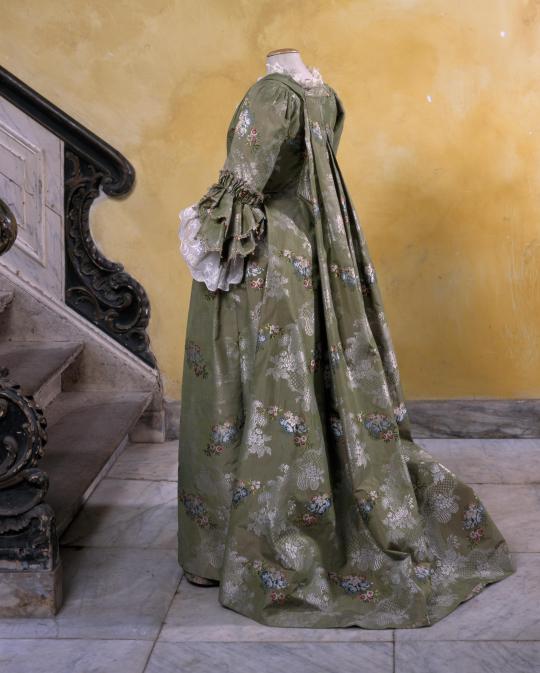
1770-1775 Robe à la française, consisting of an overcoat and skirt
silk
(Centraal Museum, Utrecht)
533 notes
·
View notes
Text

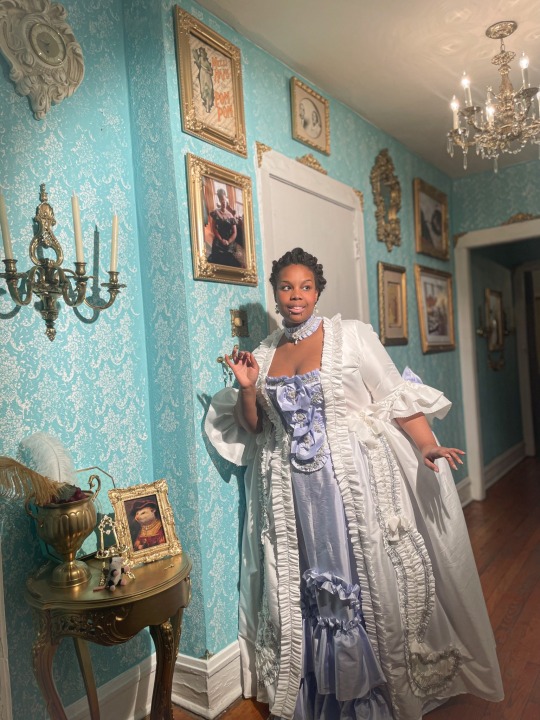
*a string quartet plays softly in the distance* | IG
#rococo#marie antoniette 2006#madame de pompadour#historical costume#historical clothing#robe à la française#baroque#watteau#fragonard#françois boucher#baby blue#pastel blue#mignonne#2022#pastel purple
2K notes
·
View notes
Text
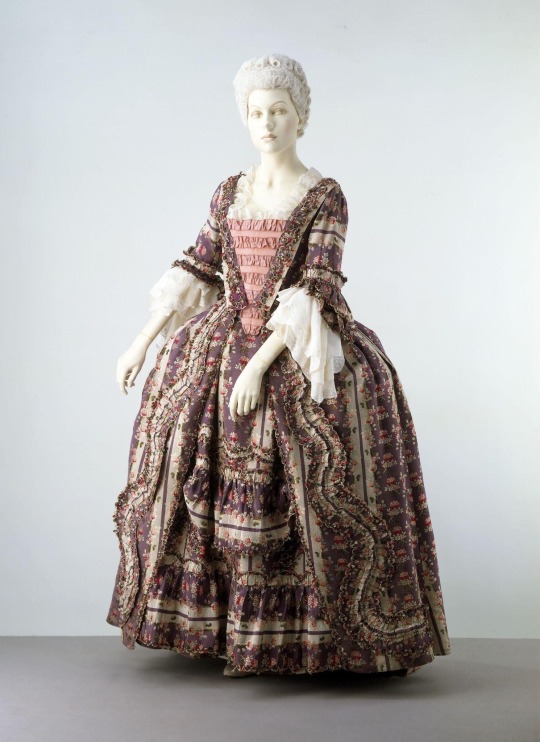
Purple Silk Robe à la Française, 1770-1775, English.
Victoria and Albert Museum.
#purple#womenswear#extant garments#dress#silk#1770#1770s#1770s dress#1770s extant garment#1770s England#1770s Britain#robe à la française#v&a#English#British
261 notes
·
View notes
Photo
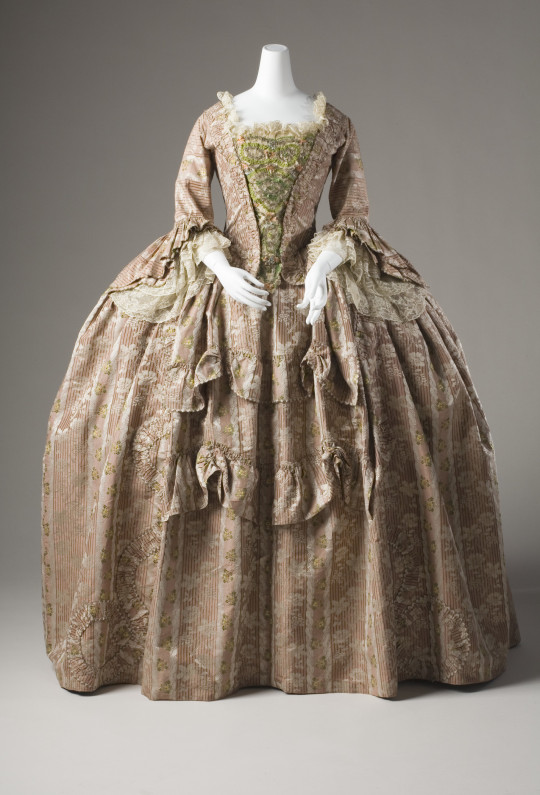

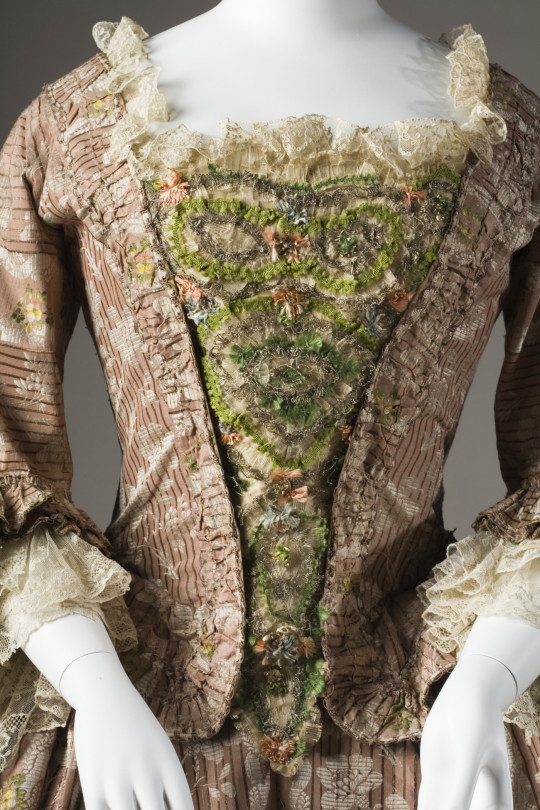
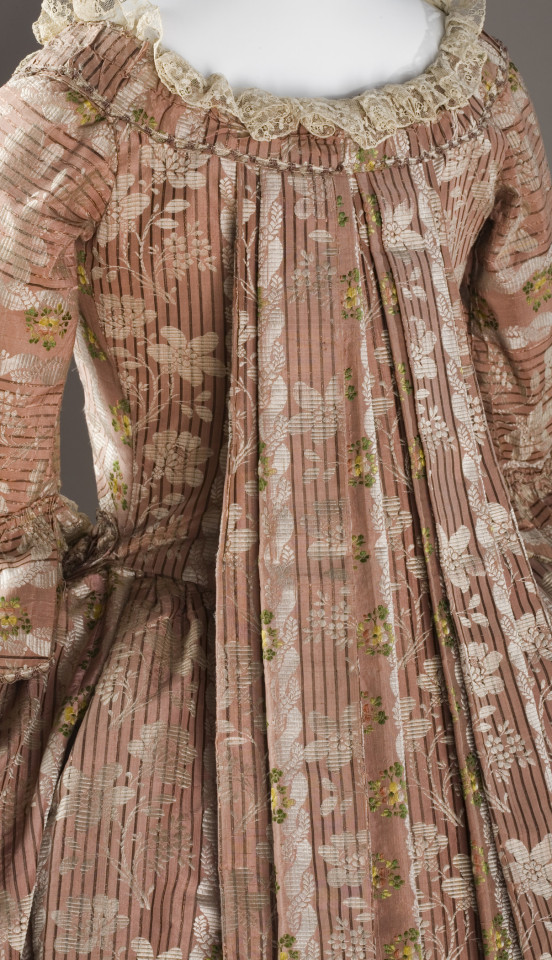


Woman’s Dress (Robe à la française). France (1760s-1770s).
Silk taffeta.
Images and text information courtesy LACMA.
394 notes
·
View notes
Text



A woman's sack and petticoat, 1770-75, English; white figured satin, brocaded with coloured silks, Spitalfields, 1750s; updated 1775-80
#18th century#18th century fashion#spitalfields silk#fashion history#historical fashion#1770s fashion#silk#1770s#robe à la française#rococo
112 notes
·
View notes
Text


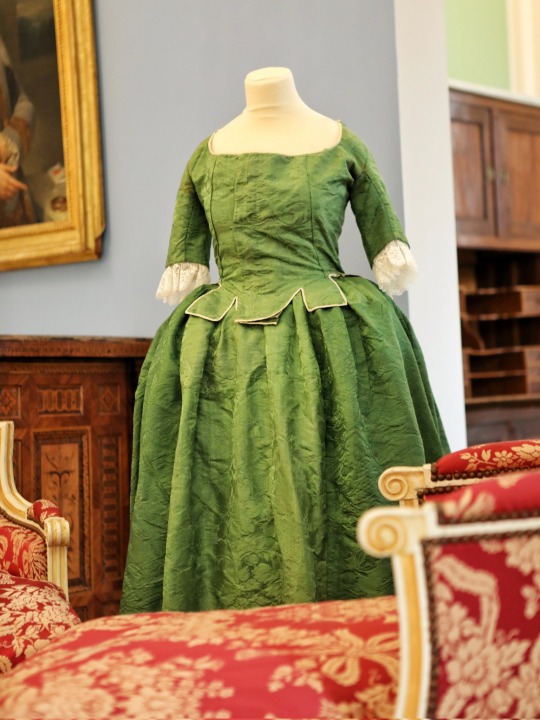
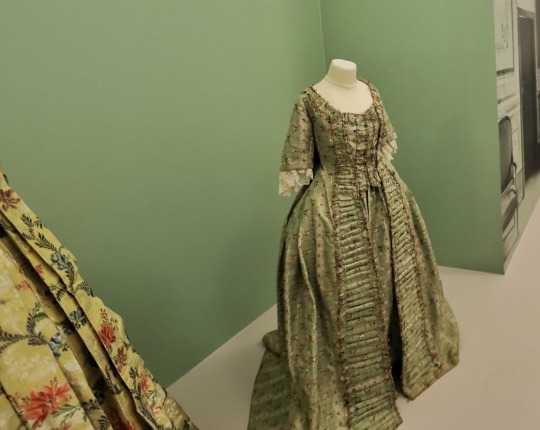
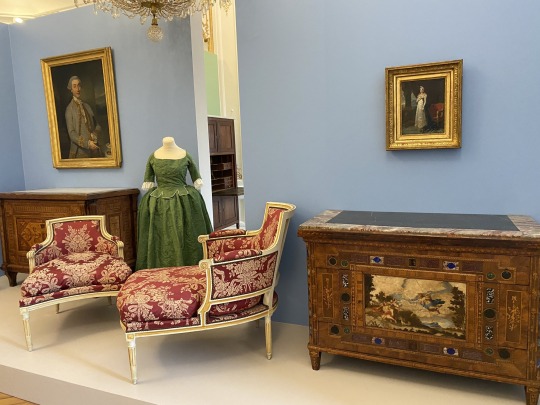
18th century dresses at Malmaison in France. Current exhibition from the Château de Bois-Préau: 1769, Corsica at the Birth of Napoleon Bonaparte
For several years, the National Museum of the House of Bonaparte in Ajaccio, Napoleon's birthplace where his family lived since the end of the 15th century, has been exploring with talent the history of Corsican society, the architecture of patrician houses, their furnishings and the art of living in Corsica in the 18th century.
For the first time, the synthesis of this work will be presented at the National Museum of châteaux des Malmaison and Bois-Préau on the ground floor of the newly restored Château de Bois-Préau.
#dresses#18th century#1700s#1700s fashion#18th century fashion#rococo#Corsica#corse#La corse#malmaison#château de malmaison#Château de Bois-Préau#1700s dresses#18th century dresses#18th century dress#robe a la francaise#robe à la française#sack-back gown#18th century gown#gown#1700s gown#Paris#Ajaccio#Bonaparte#fashion#history of fashion#fashion history#France#Napoleon#napoleon bonaparte
153 notes
·
View notes
Photo



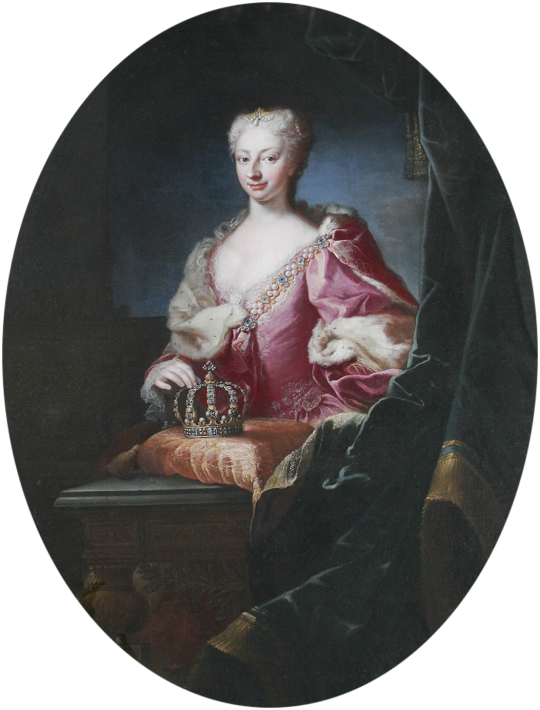
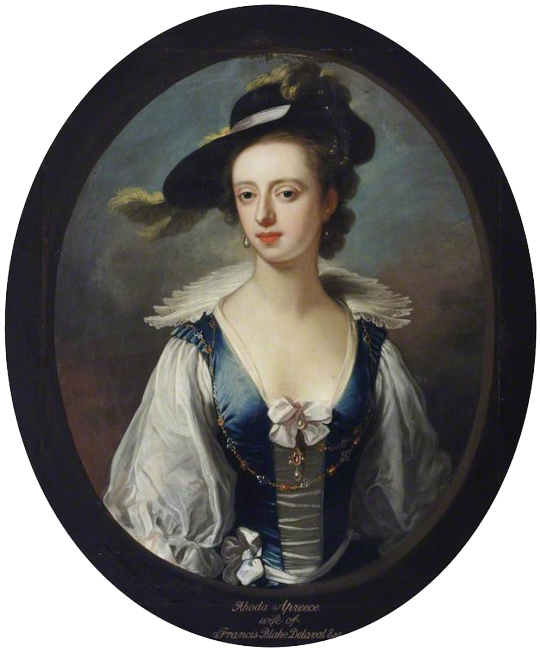
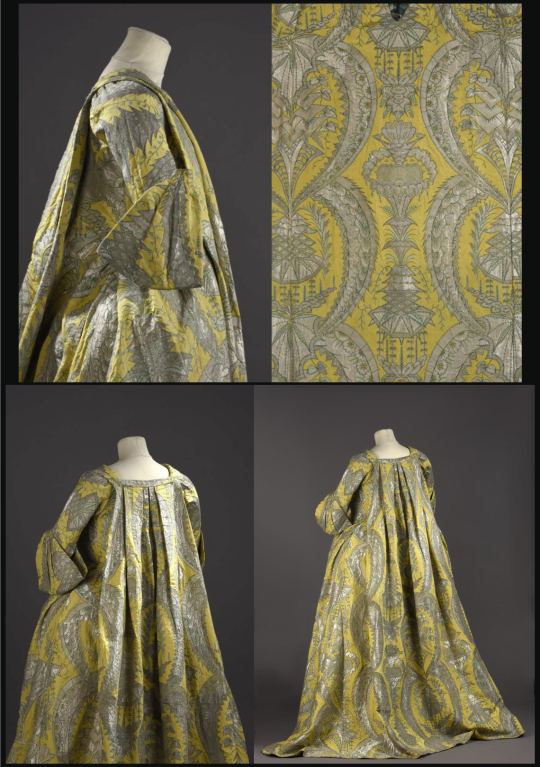
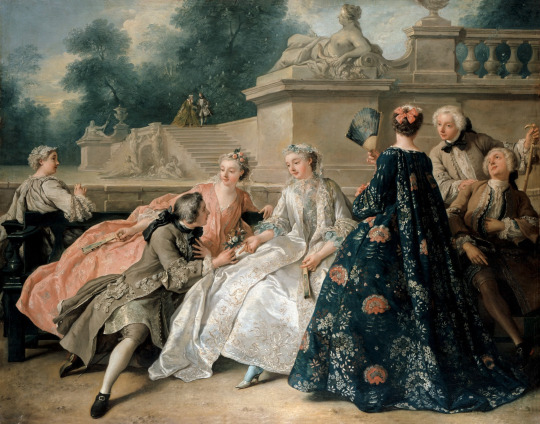



Early 1730s dresses (from top to bottom) -
1730 Tea Party at Lord Harrington's by C. Phillips detail (Yale Center for British Art, Yale University - New Haven, Connecticut, USA). Probably from Wikimedia; fixed spots with Pshop 1247X1623. There are many caps and veils, square necklines, and laced bodices with revers. But full-blown panniers are not to be seen.
1730 Marquise de Gueydan as Flora by Nicolas de Largillière (Musée Granee - Aix-en-Provence, Bouches-du-Rhône, Provence-Alpes-Côte d'Azur, France). From cutlermiles.com/portrait-of-marquise-de-gueydan-as-flora-nicolas-de-largilliere/ 1908X2484. She wears a stout Swiss belt and cleft coiffure that harken back to the late Louis XIV era.
ca. 1730 Empress Elisabeth Christine by Johann Gottfried Auerbach (auctioned, probably by Lempertz). From Wikimedia trimmed 1715X2352. She wears a round skirt and a scoop neckline.
ca. 1730 Polyxena of Hesse-Rotenburg, Queen of Sardinia by Maria Giovanna Clementi (location ?). From tumblr.com/blog/view/jeannepompadour; enlarged by half 1053X1385. Her dress has a deep V neckline filled in by a modesty piece.
ca. 1730 Rhoda Apreece, Mrs Francis Blake Delaval attributed to Enoch Seeman the Younger (Seaton Delaval - Seaton Sluice, Northumberland, UK). From artuk.org; enlarged by half 994X1200. The ruff makes this a Van Dyck revival dress. The laced vest and jaunty hat lend a casual air to the portrait.
ca. 1730 Robe volante (Musée de la Mode - Paris, France). From fripperiesandfobs.tumblr.com-post-139802377452-robe-volante-ca-1730-from-the-palais-galliera 1140X1620. Dresses before the 1750s often had cuffs that could be substantial like these.
1731 Die Liebeserklärung by Jean François de Troy (Sanssouci, Stiftung Preußische Schlösser und Gärten Berlin - Brandenburg, Germany). From artsandculture.google.com/asset/die-liebeserklärung-jean-françois-de-troy/XAFpCyLiWrxHZw?h 3074X24.12. Known in the Anglophone world as “The Declaration of Love. The large patterns mark this as early century. The robe à la française is firmly established in the form it would take until the late Louis XVI period.
1731 Infanta Maria Teresa Antonia de Borbón by Jean Ranc (Museo del Prado - Madrid, Spain). From their Web site; removed spots and streaks with Photoshop 2621X3051. Spain was ruled by Borbóns after the last Habsburg was cleared out in the early 1700s.
1731 Julia Calverley, Lady Trevelyan, by Enoch Seeman the Younger (Wallington Hall - Wallington, Northumberland, UK). From nationaltrustcollections.org.uk/object/584399; erased navigation marks in corners & fixed spots w Pshop 1616X1992. Clasps replace lacing to close this bodice.
1731 Lady by John Vanderbank (location ?). From the Philip Mould Historical Portraits Image Library 920X1214. The dress is Van Dyck revival similar to the one worn by Rhoda Apreece.
#1730s fashion#Georgian fashion#Louis XV fashion#Rococo fashion#C. Phillips#Marquise de Gueydan#Nicolas de Largillière#Kaiserin Elisabeth Christine#Johann Gottfried Auerbach#scoop neckline#Polyxena von Hesse-Rotenburg#Maria Giovanna Clementi#Rhoda Apreece#Enoch Seeman the Younger#feathered hat#robe volante#The Declaration of Love#Jean François de Troy#robe à la française#Infanta Maria Teresa Antonia de Borbón#tabbed bodice#Jean Ranc#Julia Calverley#cap#John Vanderbank
60 notes
·
View notes
Photo
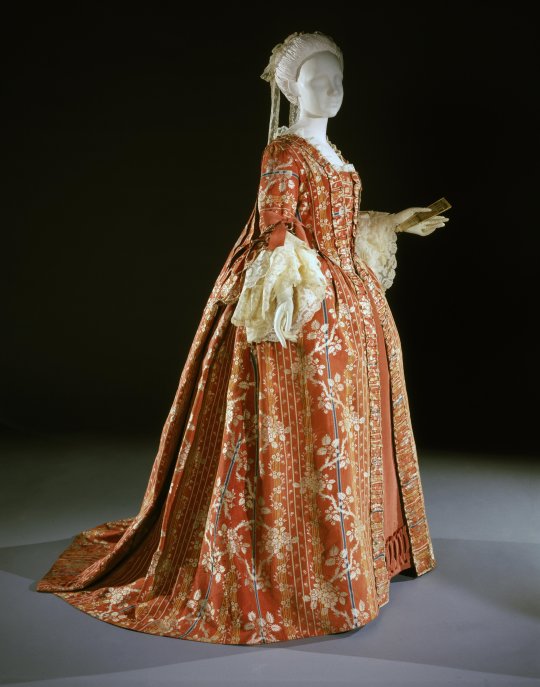
Robe à la française c. 1760-1770
296 notes
·
View notes
Text
"Mrs Washington sends home a Green Sack to get cleand, or fresh dyed of the same colour—made up into a handsome Sack again woud be her choice, but if the Cloth wont afford that, then to be thrown into a genteel Night Gown."
George Washington to Robert Cary & Company 28 September 1760
Ordering goods from Great Britain through the London based merchant house Robert Cary and Company, George inclosed his wife’s dress to be dyed and sewn again into a sack (Robe à la Française) or into a Night Gown, which is an 18th century term for Robe à l’Anglaise.
This is interesting as this letter implies that the Washingtons could not find a suitable mantua-maker in Virginia to refashion the gown. Instead Martha preferred to send her dress to England, which could take various months arrive back. Washington’s previous two orders had taken six months and ten months. This demonstrates how dependent the then British colonies were on products from their mother country.
In early August 1761, after ten months, Martha received her newly dyed gown, which had been sewn into a sack again, back.
#martha washington#george washington#historical fashion#18th century fashion#Robe à la Française#robe à l’anglaise
29 notes
·
View notes
Photo
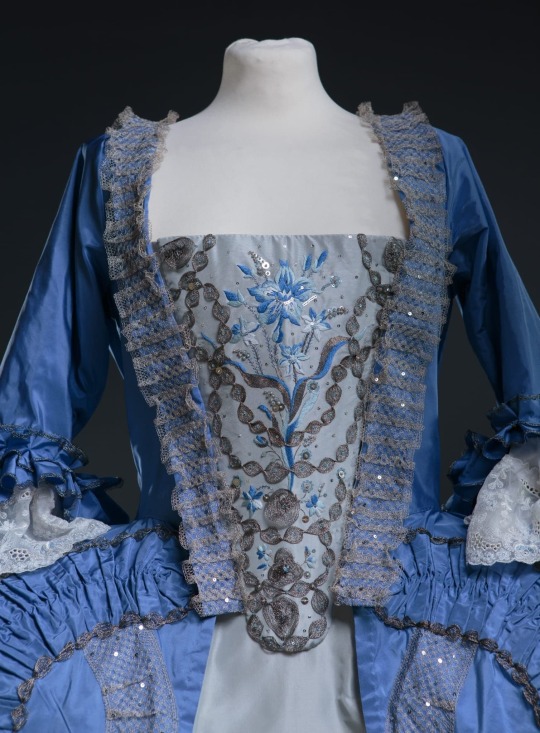
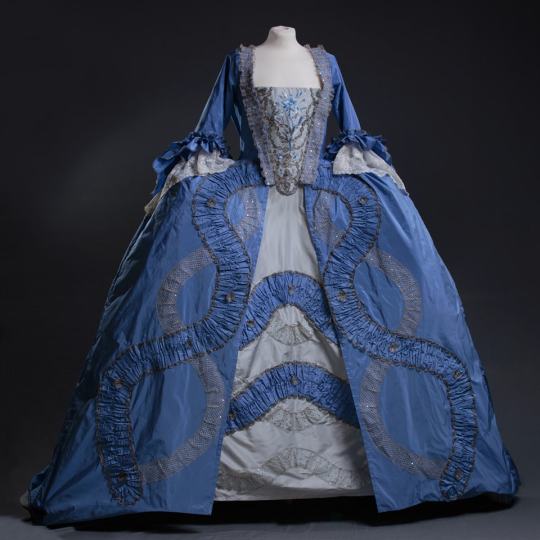
Beautiful robe à la française made for me by the talented Madame Jejette (a.k.a Anna Nurzyńska) from Atelier Saint-Honoré in Warsaw, Poland. Can’t wait to have it in person!
#robe à la française#xviiie siècle#my dress#personal#au temps de madame de pompadour#atelier saint-honore#fashion#killem-all-if-they-wont-eat-cake#the monarch
46 notes
·
View notes
Photo
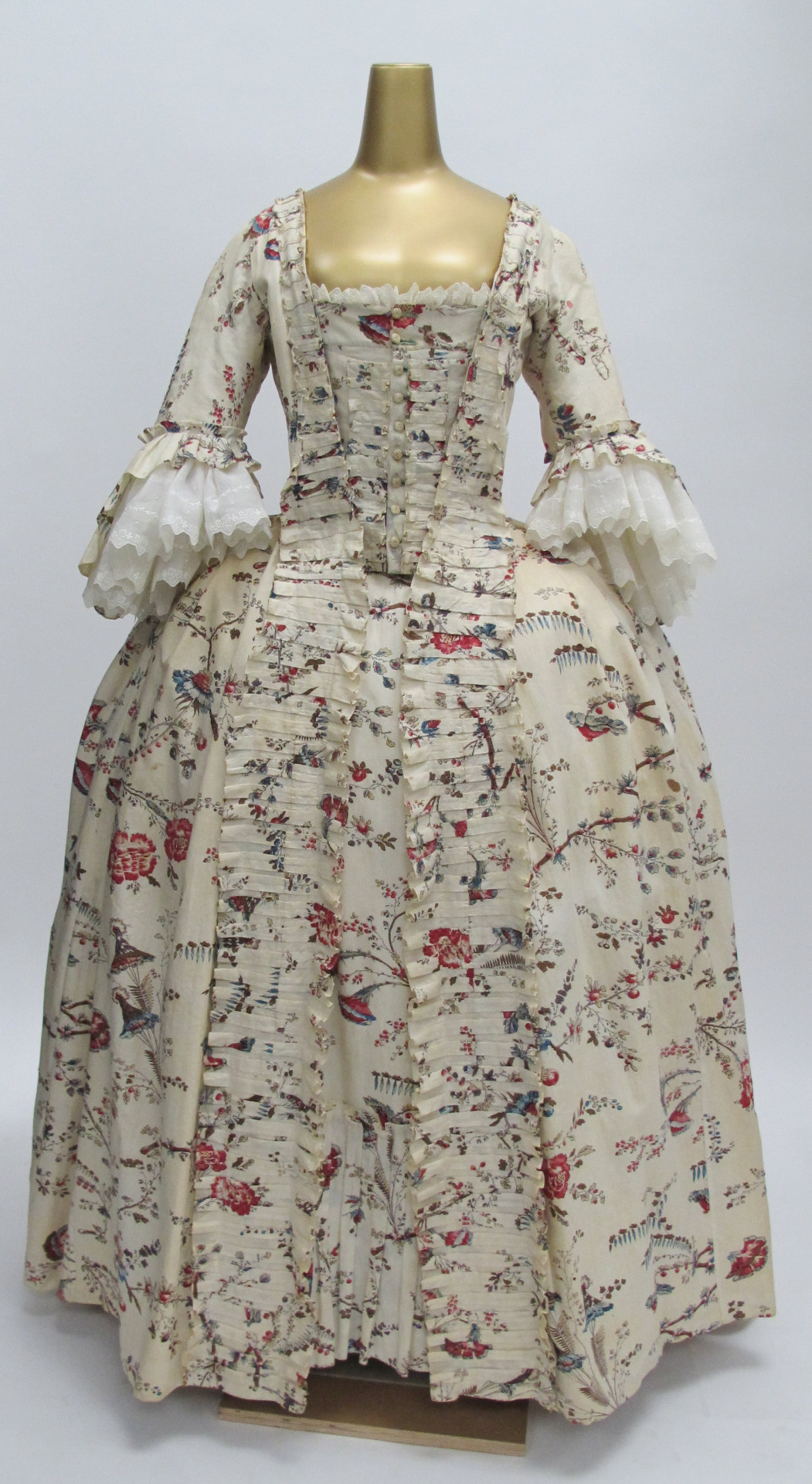
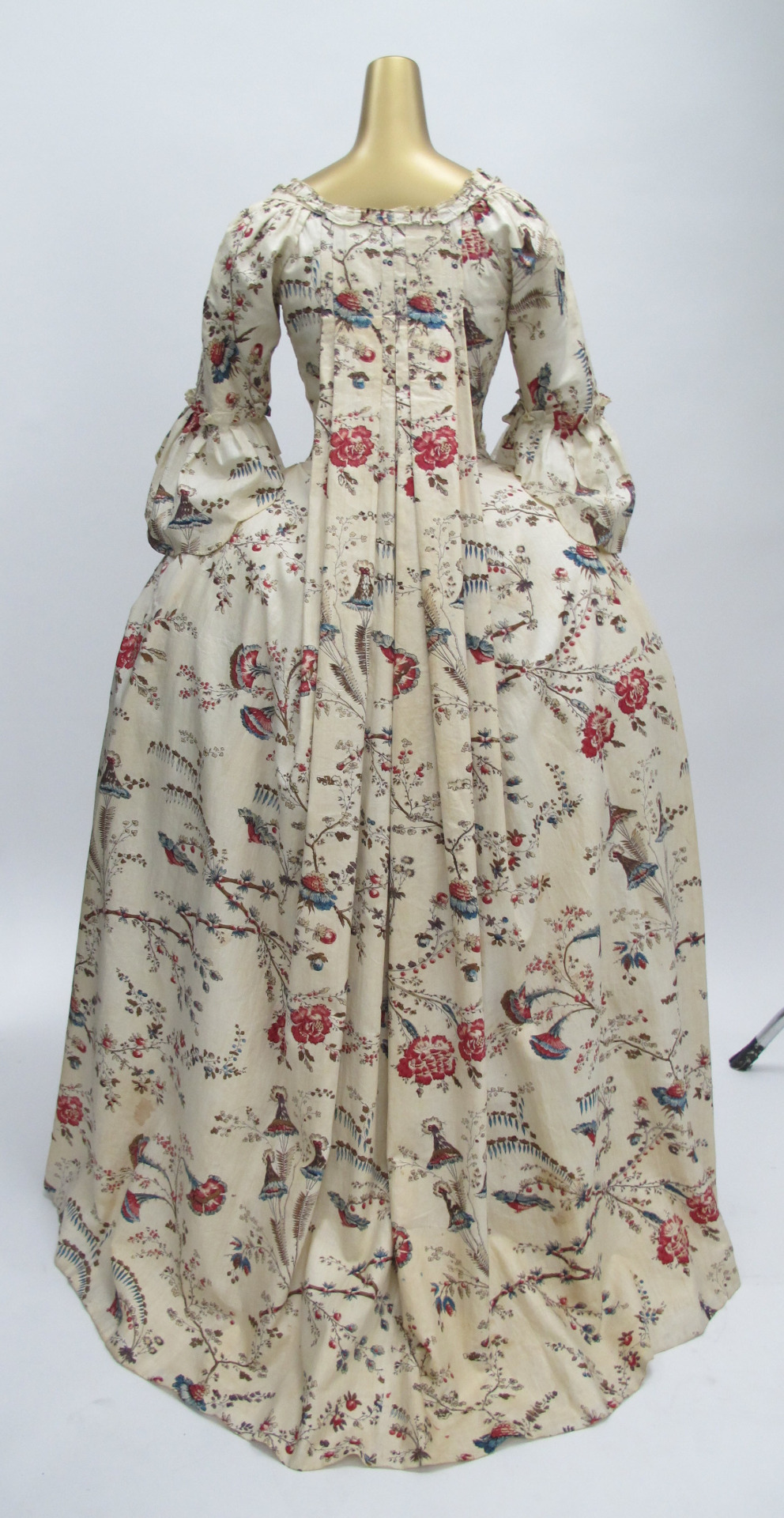
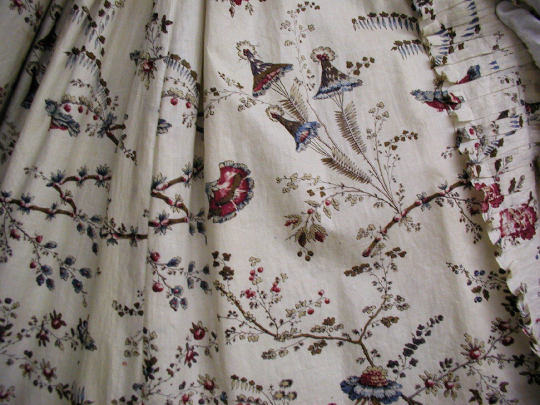
1760s Robe à la française (France)
cotton
(Metropolitan Museum of Art)
415 notes
·
View notes
Text

a snap from the fête. // IG
#rococo#marie antoniette 2006#marie antoinette#late baroque#pastel aesthetic#historical clothing#historical costume#princesscore#fairytale aesthetic#white aesthetic#white dress#18th century#18th century costume#18th century fashion#mignonne#2022#robe à la française#robe a la francaise#pastel purple
833 notes
·
View notes
Text
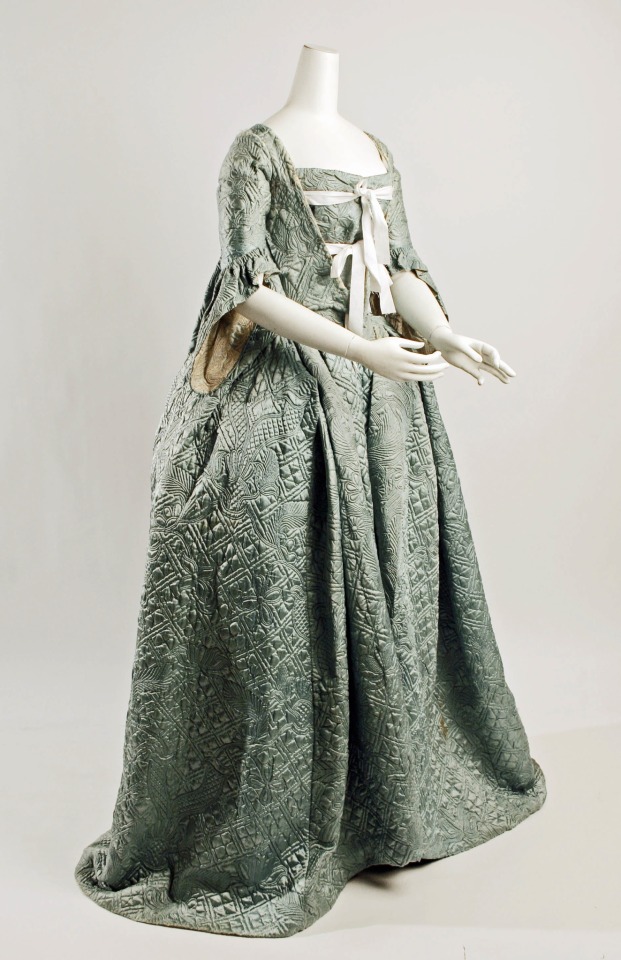

Blue Quilted Silk Robe à la Française, ca. 1750, European.
Met Museum.
#blue#womenswear#extant garments#dress#silk#robe à la française#1750#1750s#1750s dress#1750s extant garment#met museum
146 notes
·
View notes
Photo
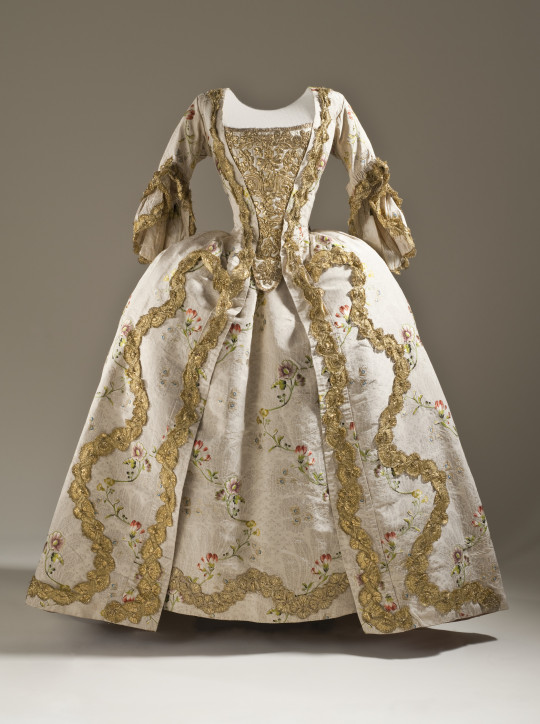

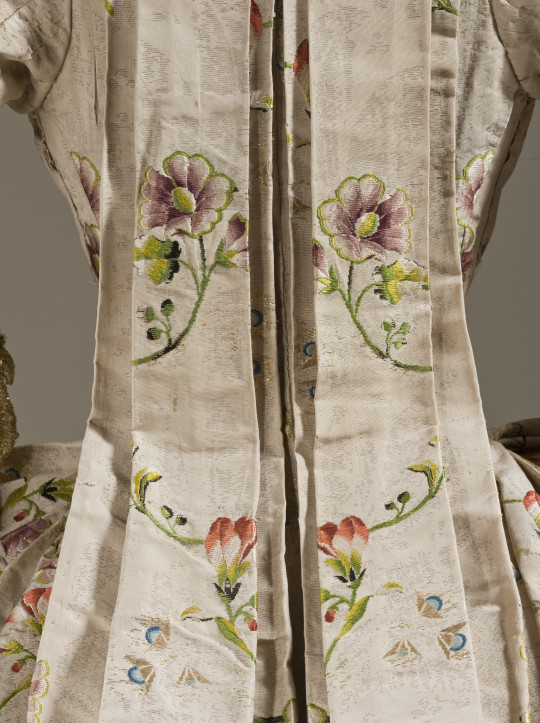
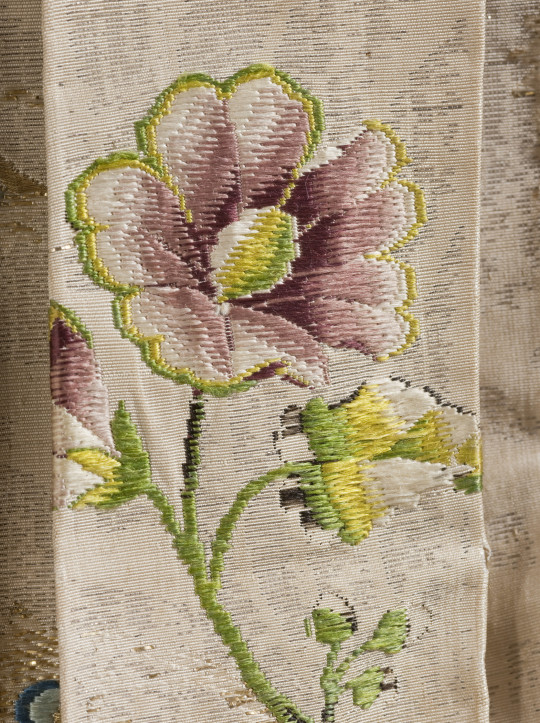
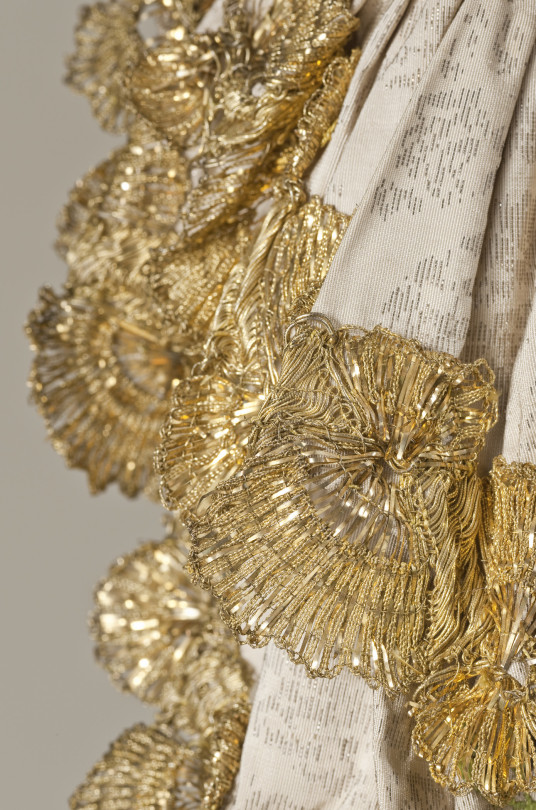
Woman's Dress (Robe à la française and Petticoat). France or England (1760-1765).
Silk with silk and metallic-thread supplementary-weft patterning and metallic-thread lace.
Images and text information courtesy LACMA.
176 notes
·
View notes
Text






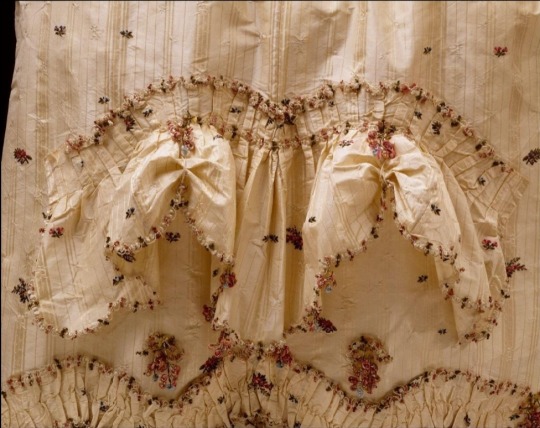
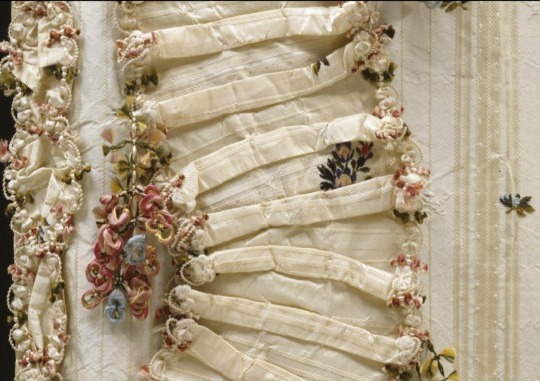
A woman's sack, petticoat and stomacher, 1765-70, British; Cream figured ground brocaded floral sprigs, Spitalfields, 1765-70, silk fringe; altered 1870-1910
#18th century#18th century fashion#fashion history#historical fashion#robe à la française#silk#rococo#spitalfields silk
119 notes
·
View notes
Text

I had no idea this meme painting was made by Jacques-Louis David 😂😂
Also, he made it the year Napoleon was born, 1769
#why is David kind of iconic??#lmfao#Madame François Buron#David#jacques louis david#18th century#1700s#1769#robe à la française#France#French art#rococo#baroque#Louis xv#art#art history#art meme#art memes#portrait#18th century portrait#Art Institute of Chicago#Jacques-Louis David#French#women in art#women#women reading
92 notes
·
View notes